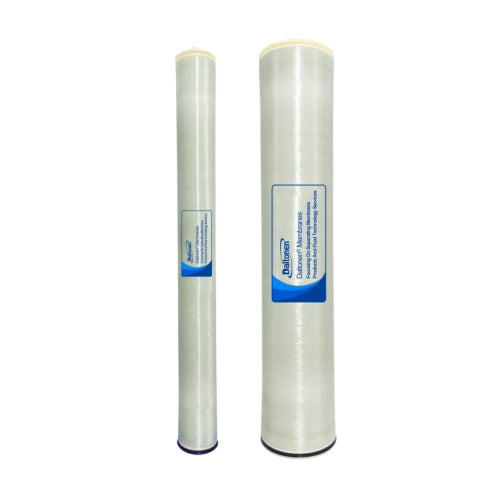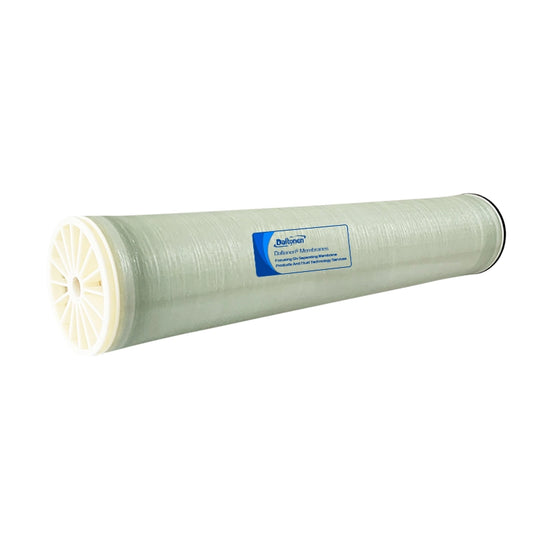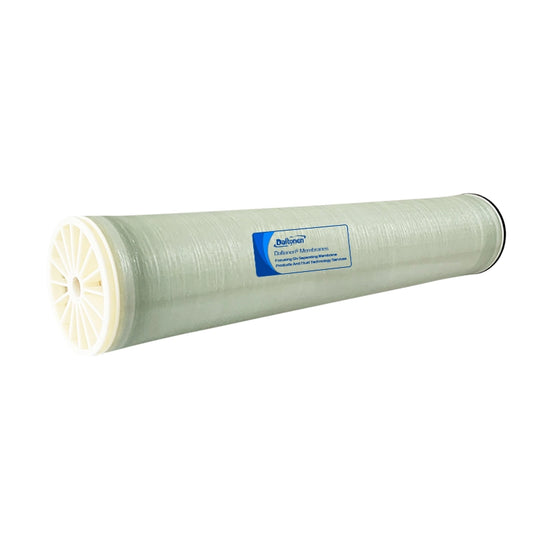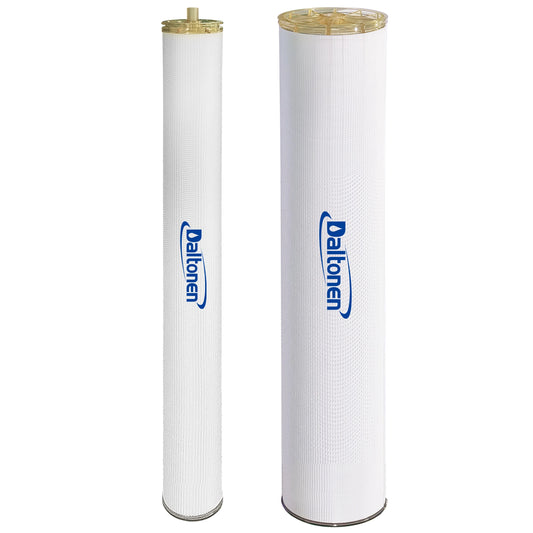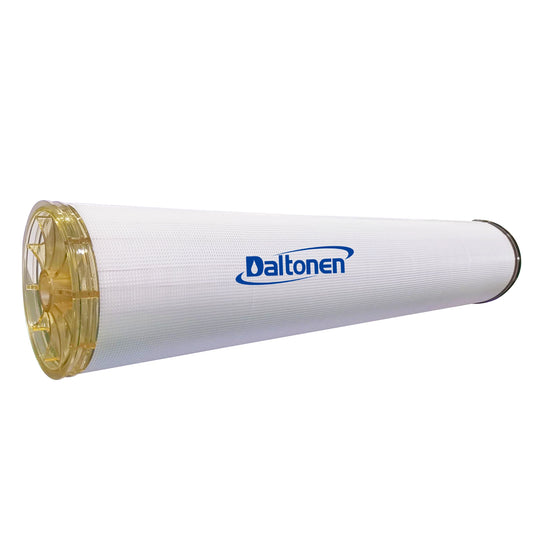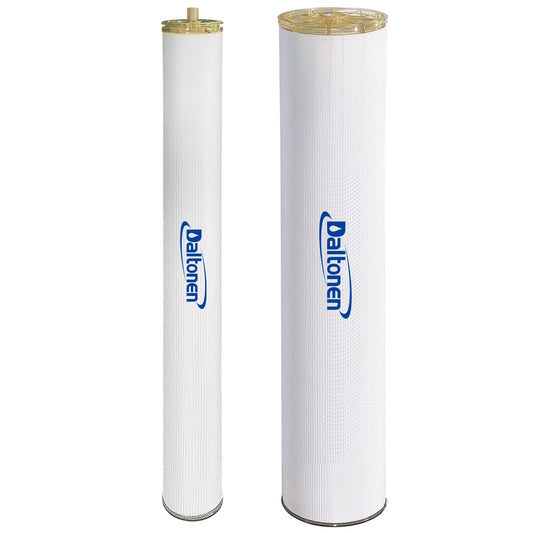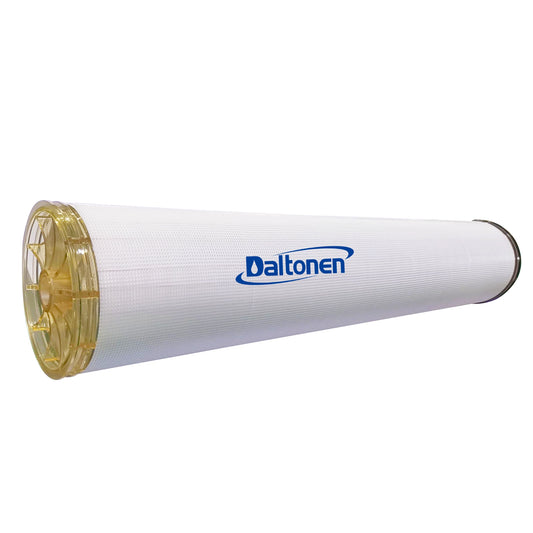Process Design Scheme for Ultrapure Water Reverse Osmosis System in the Biopharmaceutical Industry
Process Design Scheme for Ultrapure Water Reverse Osmosis System in the Biopharmaceutical Industry
1.0 Design Basis and Objectives
-
Source Water: Municipal tap water or deeply treated surface water.
-
Product Water Use: Sterile preparation, active pharmaceutical ingredient (API) production, cleaning, and laboratory water.
-
Product Water Standards:
-
Pharmacopoeia Compliance: Meets all requirements for Water for Injection (WFI) and Purified Water (PW) as per USP, EP, and the Pharmacopoeia of the People's Republic of China.
-
Key Parameters:
-
Conductivity (25°C): ≤ 1.1 µS/cm (WFI), ≤ 1.3 µS/cm (PW)
-
Total Organic Carbon (TOC): ≤ 500 ppb (0.5 mg/L)
-
Microbiological Limit: < 10 CFU/100ml (Alert Level)
-
Endotoxins (WFI): < 0.25 EU/mL
-
-
-
Core Process: Enhanced Pretreatment + Double-Pass Reverse Osmosis (2RO) + Electrodeionization (EDI) + Polishing Mixed Bed
-
Design Philosophy: Quality by Design (QbD), ensuring consistently stable water quality through multiple technological barriers, with system compliance to data integrity requirements.
2.0 Detailed Process Description
The following flowchart clearly illustrates the complete process from raw water to ultrapure water production, highlighting key measures implemented for TOC control.
flowchart TD
subgraph PreTreatment[Pretreatment System - 1st & 2nd Barrier]
A[Municipal Water] --> B[Raw Water Tank];
B --> C[Raw Water Pump];
C --> D[Multi-Media Filter];
D --> E[Activated Carbon Filter];
E --> F[Softener/Antiscalant Dosing];
F --> G[Cartridge Filter<br>5μm];
end
subgraph PrimaryRO[Primary Reverse Osmosis - 3rd Core Barrier]
G --> H[Primary RO High-Pressure Pump];
H --> I[Primary RO Unit];
I -- Concentrate --> J[Drain];
I -- Permeate --> K[Primary RO Permeate Tank];
end
subgraph SecondaryRO[Secondary RO - 4th Barrier & TOC Control]
K --> L[Secondary RO Boost Pump];
L --> M[NaOH Dosing System<br>Adjust pH to ~8.5];
M --> N[Secondary RO Unit];
N -- Permeate --> O[Secondary RO Permeate Tank];
N -- Concentrate --> P[Return to Primary Inlet];
end
subgraph Polishing[Polishing System - 5th & 6th Ultimate Barriers]
O --> Q[Electrodeionization Unit];
Q --> R[TOC UV Destruct Unit<br>185nm+254nm];
R --> S[Polishing Mixed Bed Ion Exchange];
S --> T[Ultrapure Water Storage Tank];
end
subgraph Distribution[Distribution & Loop System - Prevent Recontamination]
T --> U[Ultrapure Water Distribution Pump];
U --> V[Heat Exchanger<br>Maintain >80°C Loop];
V --> W[Points of Use];
W --> X[Return Loop];
X --> T;
end
subgraph Support[Support Systems]
Y[Ozone/Hot Water Sanitization] --> T;
Z[CIP System] --> I & N;
end
Step-by-Step Process Explanation:
1. Pretreatment System (RO Membrane Protection)
-
Purpose: Provide qualified feed water for the RO system by removing chlorine, hardness, suspended solids, and colloids.
-
Multi-Media Filter: Removes suspended solids and colloids, reducing turbidity.
-
Activated Carbon Filter: Core Unit. Thoroughly adsorbs and removes residual chlorine and organics, protecting RO membranes from irreversible oxidative damage.
-
Softener/Antiscalant: Removes calcium and magnesium ions or inhibits scale formation to prevent RO membrane scaling.
-
Cartridge Filter: 5μm filter elements act as the final safety barrier, protecting the high-pressure pump and RO membranes.
2. Primary Reverse Osmosis (Main Desalination Barrier)
-
Purpose: Removes 97-99% of ions, organics, microorganisms, and endotoxins from the source water.
-
Design: Uses brackish water low-fouling RO membranes, with a system recovery rate typically set at 70-75%.
3. Secondary Reverse Osmosis (Advanced Purification & TOC Control)
-
Purpose: Further purifies the primary RO permeate and significantly reduces TOC.
-
Key Technology - Alkalinization: NaOH is dosed before the secondary RO to adjust the feed pH to 8.5-9.0.
-
Mechanism:
-
CO₂ Removal: Converts dissolved CO₂ (molecular form) into HCO₃⁻ ions, which can be effectively removed by the RO membrane, significantly reducing product water conductivity.
-
Enhanced TOC Removal: At high pH, organic molecules ionize, increasing their molecular size and negative charge, making them more readily repelled by the negatively charged RO membrane surface, greatly improving TOC rejection.
-
-
4. Polishing System (Achieving Ultrapure Water)
-
Electrodeionization (EDI):
-
Function: Deeply removes residual ions from the RO permeate without the need for chemical regeneration, producing water with a resistivity of 10-18 MΩ.cm. This is a green, continuous, and economical polishing technology.
-
-
TOC UV Destruct Unit:
-
Function: Utilizes 185nm wavelength UV light to generate hydroxyl radicals from water molecules, aggressively oxidizing residual organic molecules to stably reduce TOC to ≤500 ppb.
-
-
Polishing Mixed Bed:
-
Function: Contains nuclear-grade high-purity ion exchange resin, serving as the final polishing unit to ensure the product water resistivity absolutely and stably reaches ≥18.2 MΩ.cm. It also acts as a backup during EDI maintenance.
-
5. Storage and Distribution System (Preventing Quality Deterioration)
-
Purpose: Ensure water quality remains compliant from the point of production to every point of use.
-
Design Key Points:
-
Materials of Construction: All wetted parts are 316L Stainless Steel, with internal surfaces Electropolished (EP) (Ra ≤ 0.6 µm).
-
-
Sanitization:
-
Water for Injection (WFI) System: Must be sanitized using Pure Steam or Hot Water (80-85°C) circulation.
-
Purified Water (PW) System: Can be periodically sanitized using Ozone or Hot Water.
-
-
Circulation: The system must operate with 24/7 continuous turbulent flow, velocity >1.5 m/s, to prevent dead legs and microbial proliferation.
3.0 Key Design Parameters and GMP Compliance
|
Item |
GMP Requirements & Design Key Points |
|---|---|
|
System Materials |
All wetted parts after pretreatment must be 316L Stainless Steel, with wetted surfaces Electropolished (EP), using Automatic Orbital Welding, and providing borescope inspection reports. |
|
RO Membranes |
Select low-fouling RO membrane elements with good biocompatibility. |
|
Sanitization Method |
Select Ozone, Hot Water, or Pure Steam based on product water quality (PW/WFI). The system design must support complete CIP/SIP (Clean-In-Place / Sterilize-In-Place). |
|
Instrumentation & Control |
Equipped with online conductivity meters, TOC analyzers, ozone monitors, etc. The control system must comply with GAMP5 guidelines, featuring access control, audit trails, and electronic signatures to ensure data integrity. |
|
System Validation |
Must complete the four-stage validation (DQ, IQ, OQ, PQ) and provide a full validation documentation package. |
4.0 Scheme Advantages Summary
-
Multiple Barriers Ensure Water Quality: The process chain of "Pretreatment + Double-Pass RO + EDI + Polishing" provides layered assurance for ultrapure water quality.
-
Excellent TOC Control Capability: The combined action of Secondary RO alkalinization and 185nm UV is key to stably controlling TOC below 500 ppb.
-
Compliance with cGMP and Data Integrity: Fully meets regulatory requirements of the pharmaceutical industry regarding design, materials, controls, and documentation systems.
-
Economical and Eco-friendly Operation: EDI replaces traditional chemical-regeneration mixed beds, offering greater safety, environmental benefits, and lower operating costs and risks.
This scheme forms the core of building an internationally compliant ultrapure water system for the biopharmaceutical industry. Detailed engineering for actual projects must be based on specific water quality, capacity, and site conditions.
